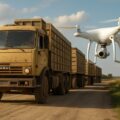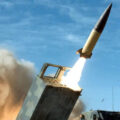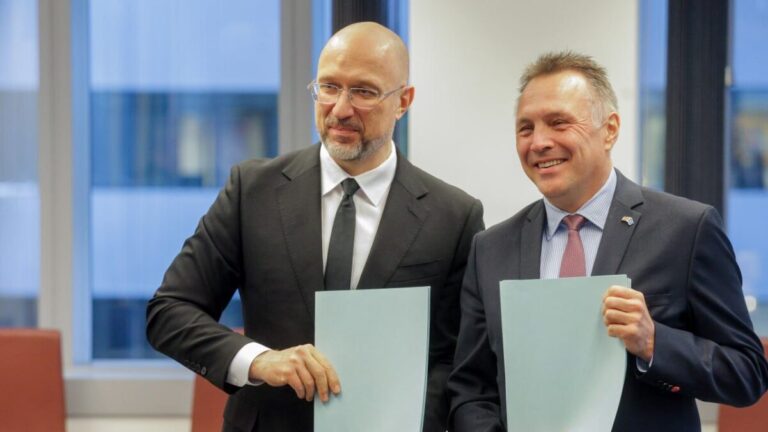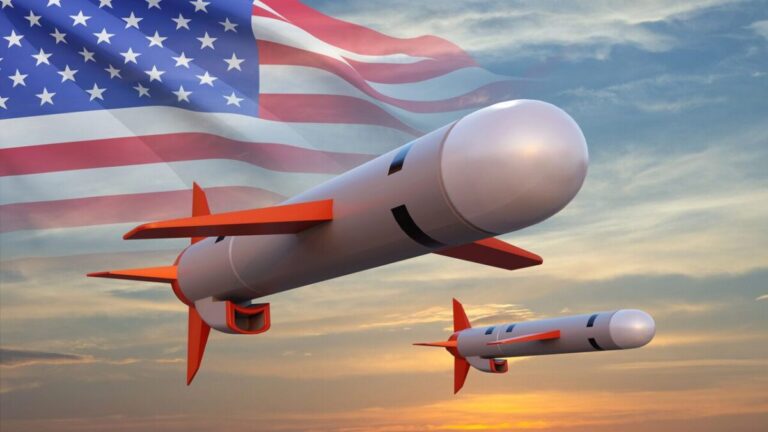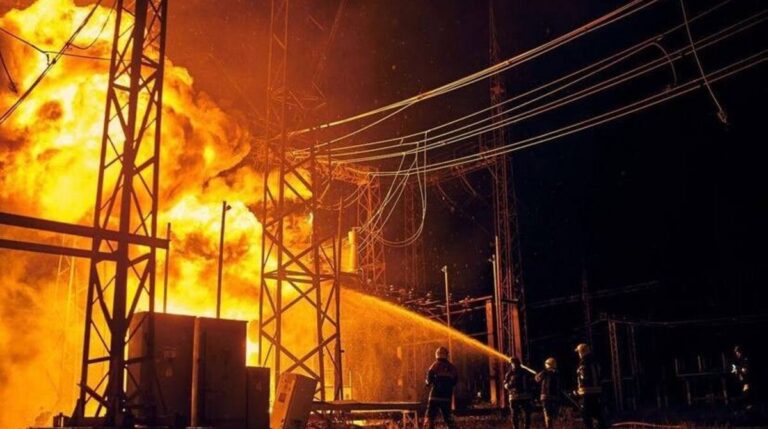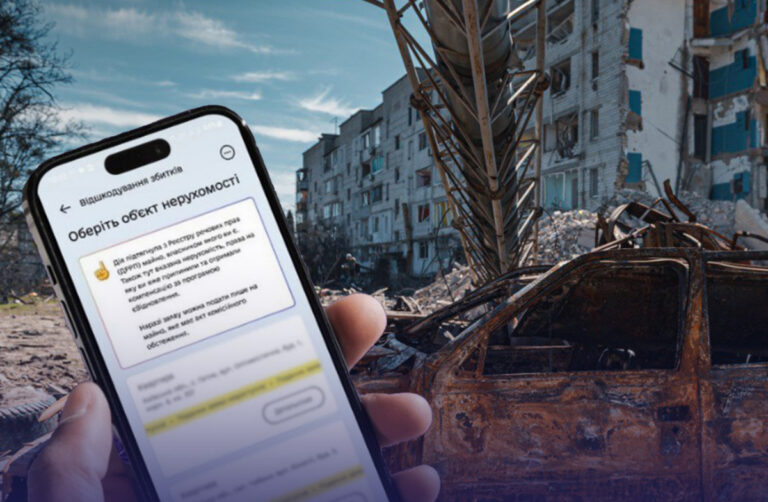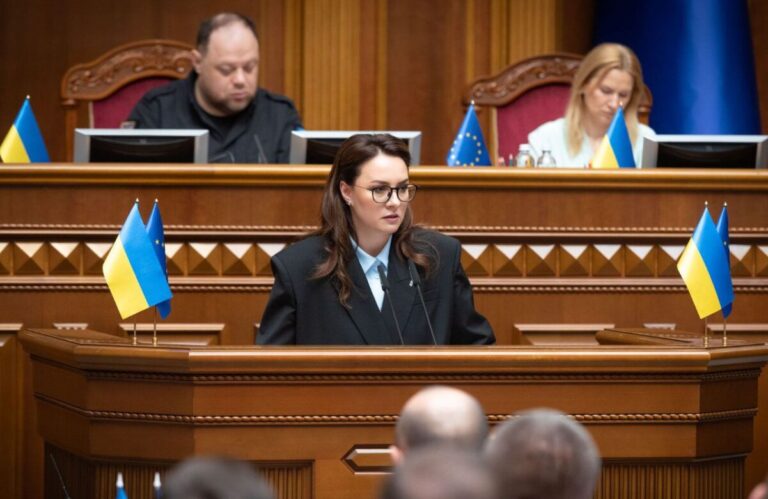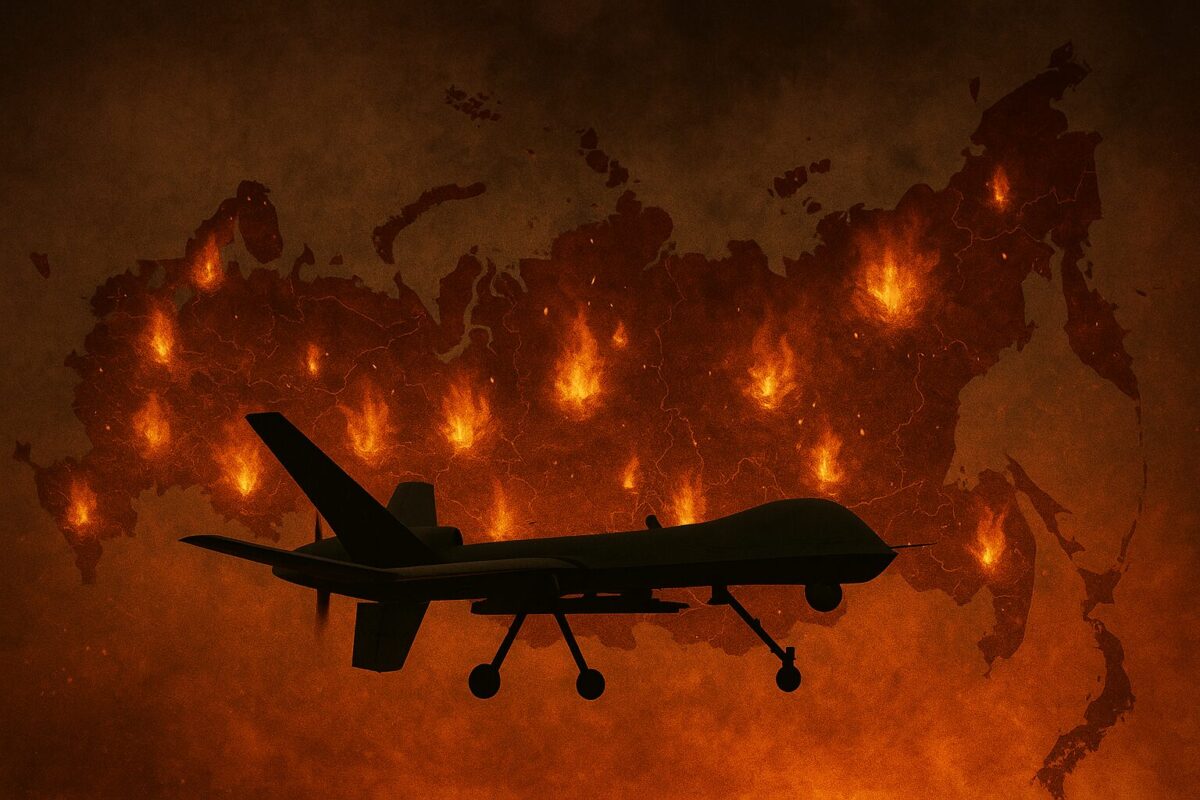
Massive drone attack on Russia: why Ukraine responds and what it changes
End of May 2025. The Russian Federation is in panic: over 700 drones strike its territory in just three days. Sirens blare in Moscow, and warehouses go up in flames in Lipetsk and Kursk. Russia’s Ministry of Foreign Affairs accuses Ukraine of “striking outside the zone of the Moscow Patriotic War” and threatens an “adequate response.”
But behind the bluster lies a simple question: why is Ukraine doing this?
What Happened: Numbers and Targets
Between May 20 and 23:
- 788 drones hit 13 regions of the Russian Federation — including Moscow, Kursk, Orel, Lipetsk, Ryazan, and Crimea.
- 63 drones flew toward Moscow — an unprecedented move since the full-scale invasion began.
- 12 UAVs reached their targets despite Russia’s air defense (by their own admission).
- The strikes hit military infrastructure: depots, factories, logistics hubs.
- The most significant target: a missile components factory in Lipetsk (linked to Iskander systems).
This is not provocation. It is response.
Why Ukraine Is Going Deep: A Direct Answer
1. Russia Continues to Bomb Civilians
- In May alone, Russia launched 30+ strikes on Kharkiv.
- Children were killed, hospitals destroyed.
- Missiles came from Belgorod, Kursk, and Orel.
These aren’t peaceful cities. They are launch pads. And Ukraine can no longer wait for missiles to fall before it responds.
2. Ukraine Hits Military Targets — Not Civilians
- There are no hits on schools, hospitals, or residential areas.
- Strikes focus on military plants, fuel depots, and army logistics.
- Under international law, these are legitimate targets in self-defense.
3. This Is Symmetry, Not Escalation
- Russia strikes from 300+ km away. Ukraine is doing the same.
- This isn’t escalation. It’s balance.
The aggressor only starts to think once he stops feeling safe.
What Officials Say (and Don’t Say)
Officially, Ukrainian institutions remain silent:
- No confirmation from the Ministry of Defense, Security Service, or Intelligence.
But off the record, the message is clear:
“We are striking military targets, respecting humanitarian norms. But we will not sit idle while our cities are bombed.” — source to The Kyiv Independent.
“This is a part of our new deep defense strategy. We are hitting the places where the war against us begins.” — Ukrainian military intelligence to BBC.
Relevant
Russia’s Response: Classic Panic
- The Russian Foreign Ministry threatens an “adequate response,” but offers no specifics.
- Foreign Minister Lavrov warns that the strikes could “disrupt the peace process” — despite Russia having shown no genuine interest in peace for months.
- Some airports in Moscow were briefly closed.
Symbolically, this matters: even the capital is no longer out of reach.
This is fear — dressed in rhetoric.
What Happens Next: Possible Scenarios
- Ukraine Continues Deep Strikes
- If these attacks prove effective — disrupting logistics, ammunition, repair facilities — this strategy will likely become systemic.
- The West Offers Tacit Support
- No government officially endorses Ukrainian strikes inside Russia.
- But the use of Western-made drones, guidance systems, and satellite intelligence points to silent approval.
- Russia Tries to Shift the Narrative
- Moscow may retaliate by hitting energy infrastructure or residential areas — to provoke outrage or appear as a victim.
We Are Not the Aggressors — We Just Stopped Being Silent
Ukraine has never waged war on Russian soil. Since 2014, it has been defending its own.
But defense today means more than trenches. It means neutralizing what fuels the war.
We are not going to Moscow. But we are saying clearly: “If you strike Kharkiv, you will not sleep in Lipetsk.”
This is not revenge. This is survival.
And the world must understand:
A drone in response to an Iskander is not provocation — it is balance.





